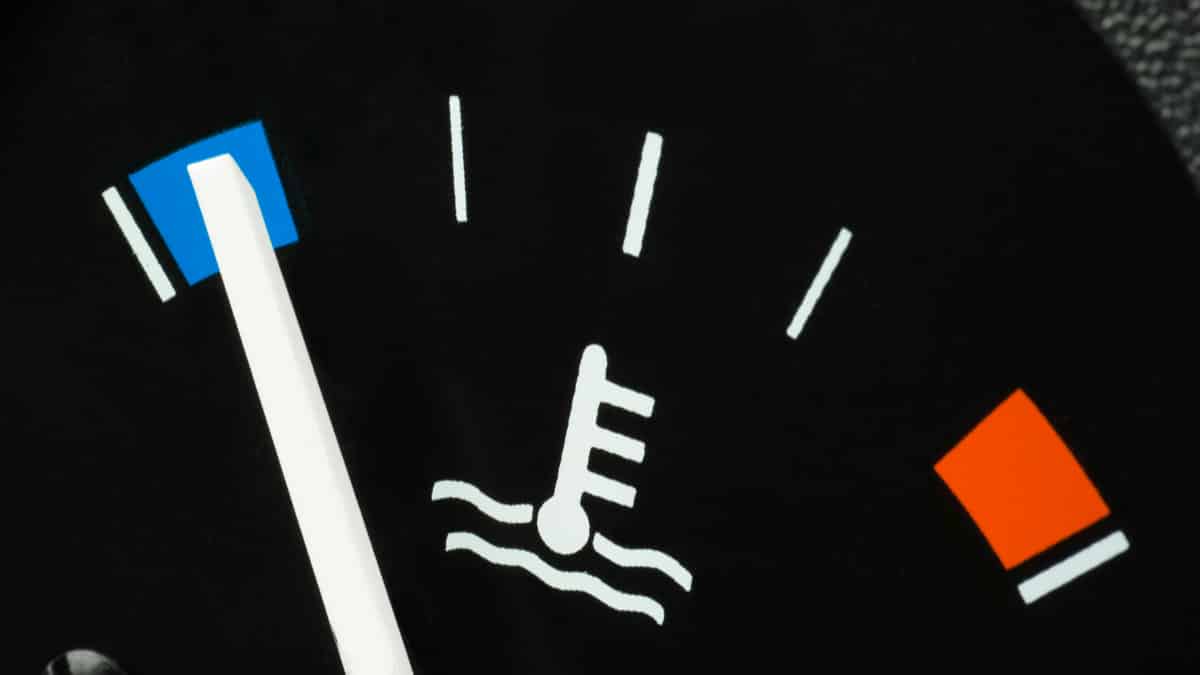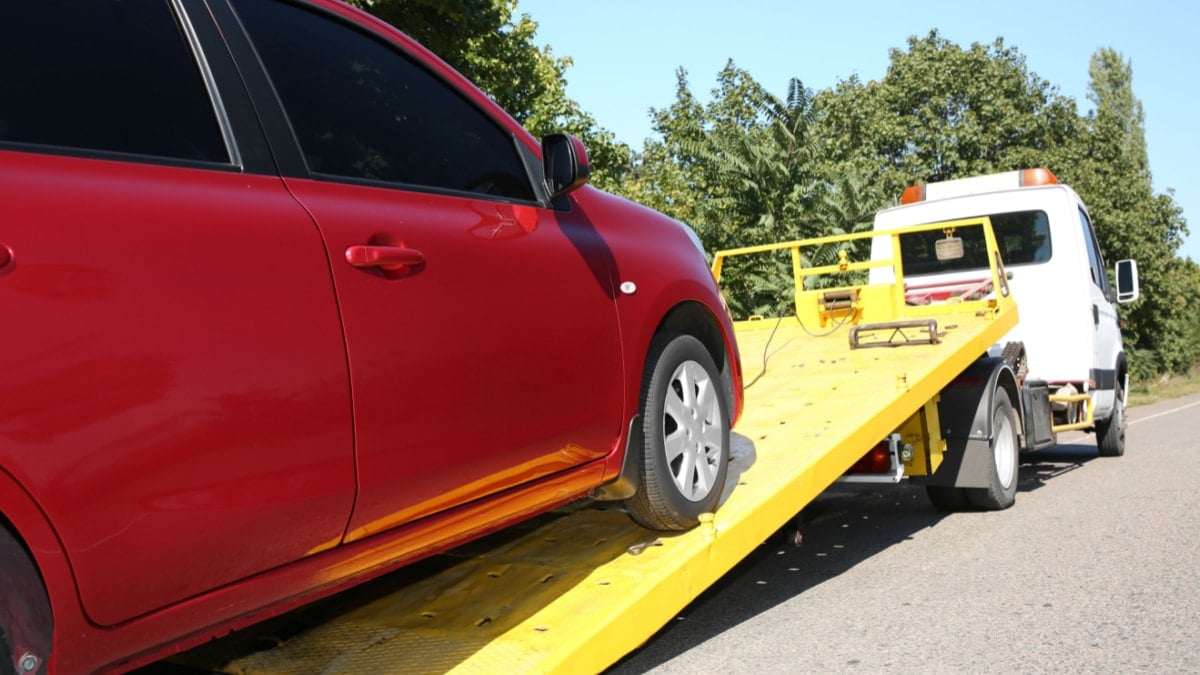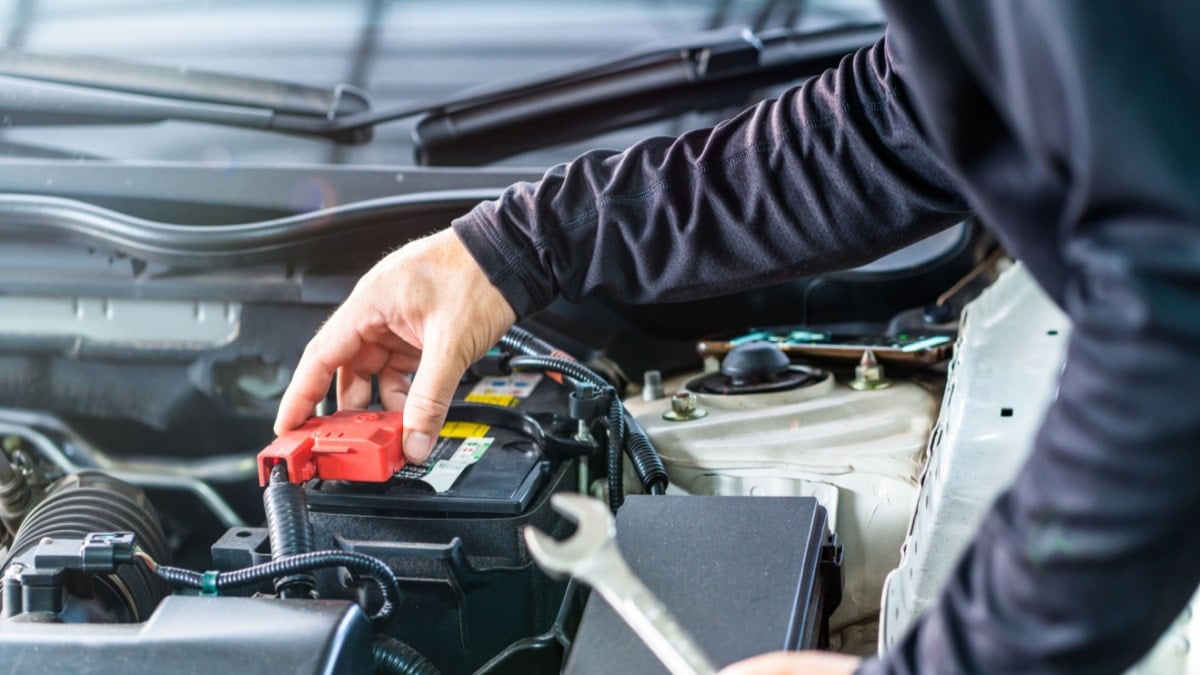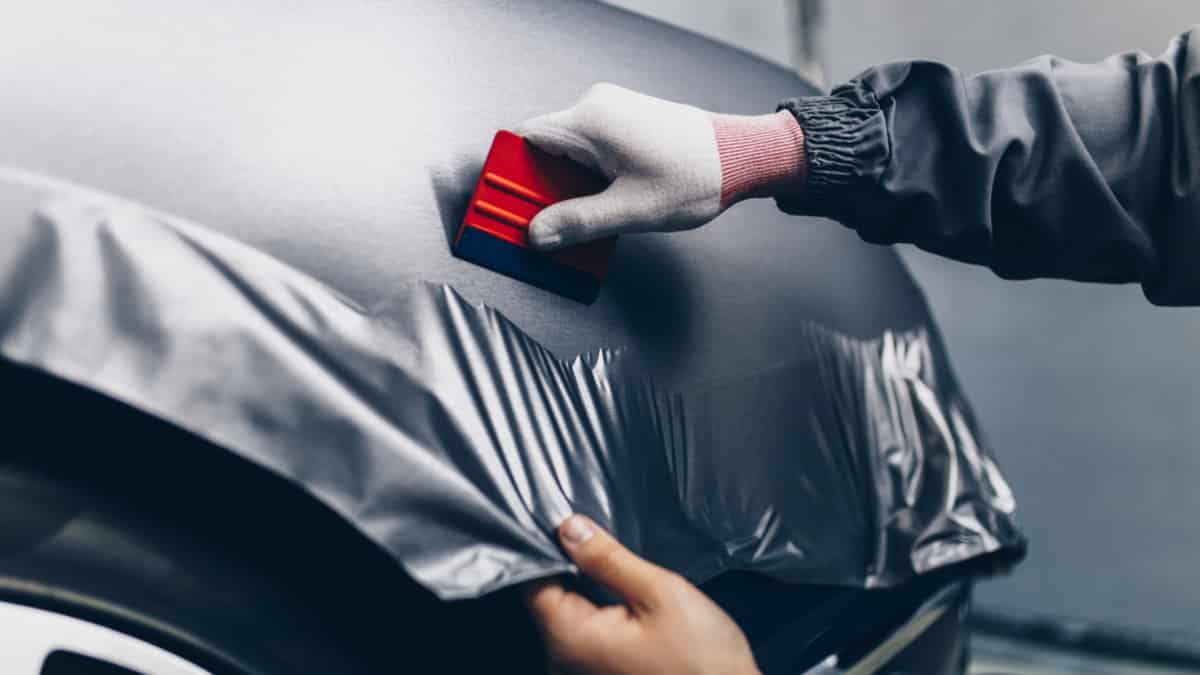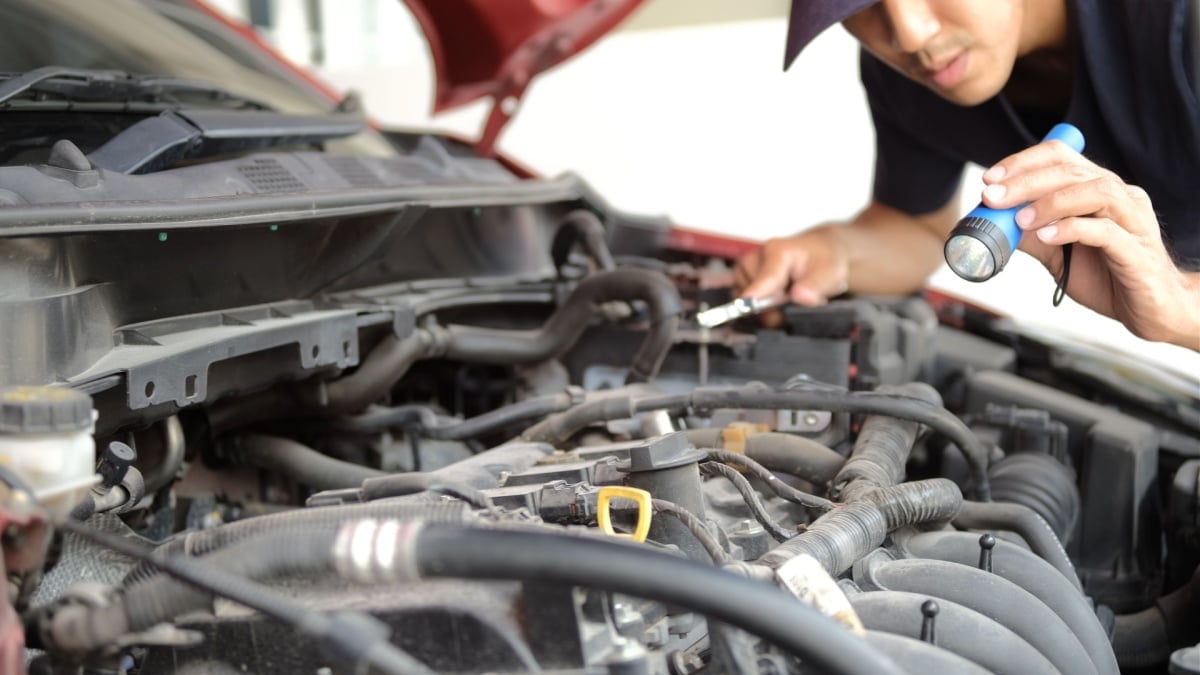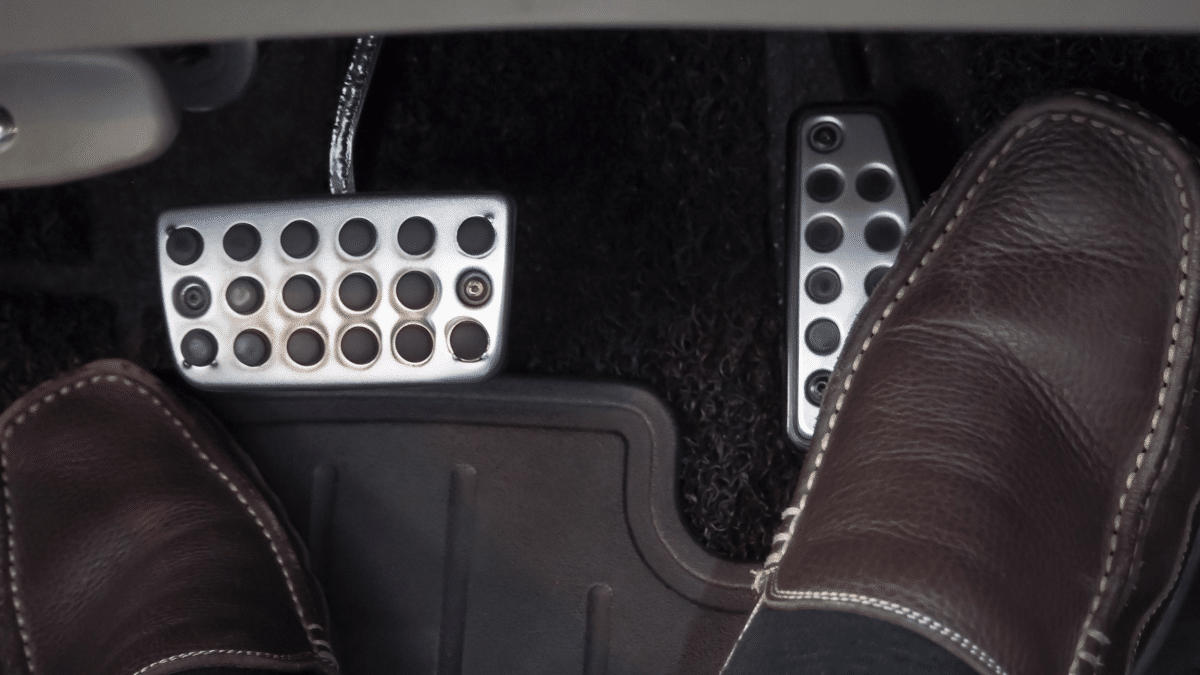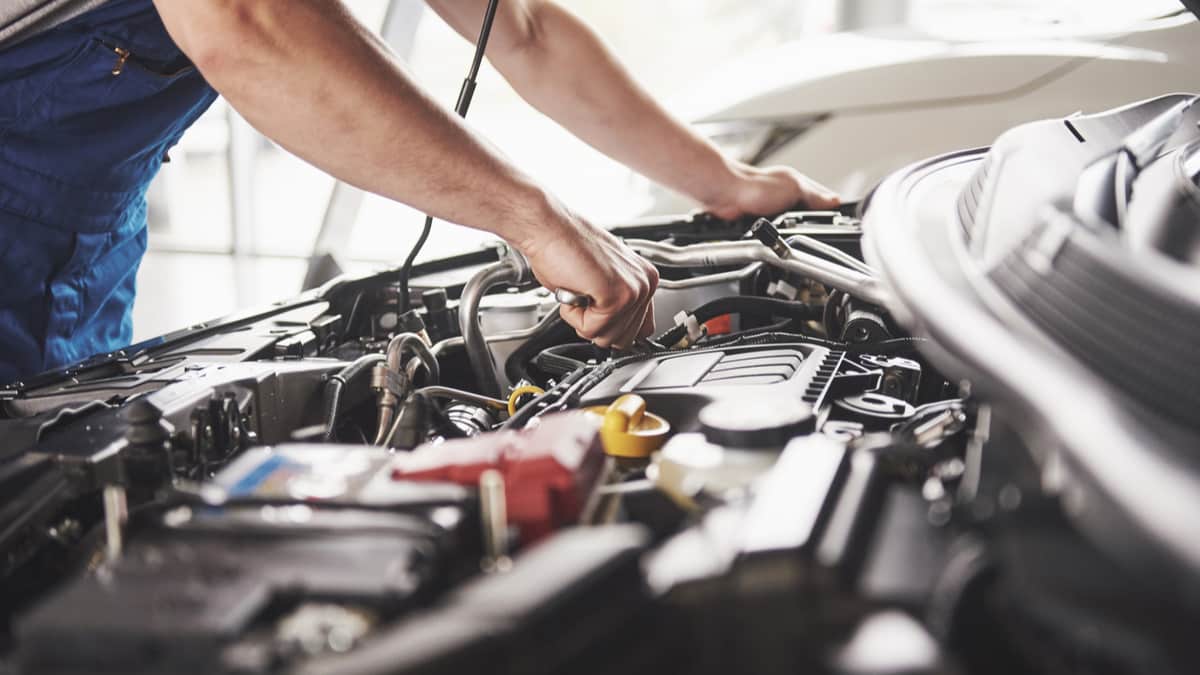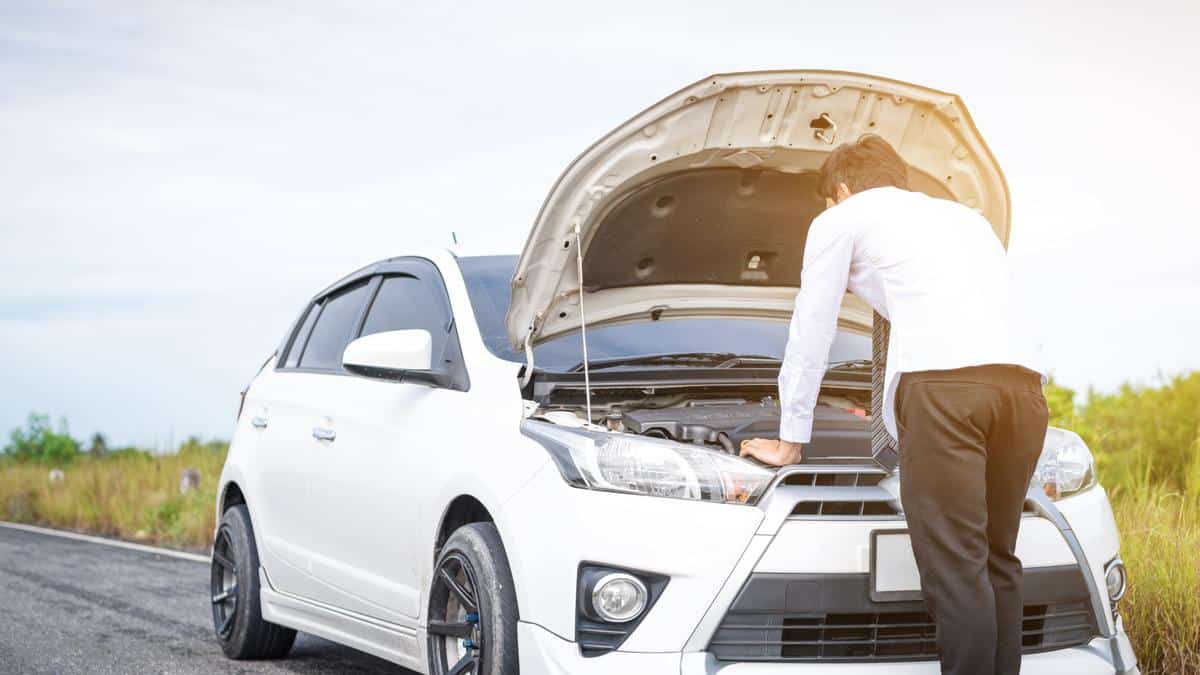When you are driving to work or into the city, you want to enjoy the trip with your favorite tunes or podcast. The last thing you want to listen to is an annoying squeak coming from the car. If the car is making a squeaking noise while driving, it becomes difficult to ignore.
In this article, I review all the causes so you can narrow down the problem. I also show you how to fix the dreaded squeak once and for all.
Why Is My Car Making A Squeaking Noise When Driving?
The most common reasons why a car is making a squeaking noise when driving are due to a loose belt or something that has malfunctioned in the steering system. It can also be caused by worn brake pads, tire problems, a suspension lacking lubrication, or moisture in the morning.
Here is a more detailed list of the possible causes of why your car is making a squeaking noise while driving.
1. Loose Belt
If you have ever had a loose serpentine belt under the hood, you know how squeaky that can be. This rubber belt is needed to drive the various accessories found around the engine.
If you hear the squeaking when you push on the accelerator, it means that the belt is wearing. You don’t want to drive with a worn belt, because it could snap at any time. If it breaks, you risk serious engine damage that will cost you much more than a simple belt to fix.
If you hear the squeaking sound immediately after starting the car when it is cold, which then fades when the engine gets hot, it is a strong sign that the serpentine belt is loose. In some car models, you can tighten the belt with the tensioner.
RELATED: 6 Symptoms of a Loose Alternator Belt (& Replacement Cost)
2. Malfunctioning Steering System
If you notice the squeaking or whining noise when you are taking a turn, the steering could be to blame. Most often, it’s a lack of power steering fluid. It could also be contaminated.
This fluid is needed to keep the steering system lubricated. As it becomes contaminated with debris and dirt, it can no longer do its job effectively.
There are also steering parts that could be failing, leading to a squeaking sound. If the fluid looks good and it’s full, you might need to replace the power steering pump instead.
3. Worn Brake Pads
Squeaking noises occur when you push on the brake pedal because of worn-out pads. As the wear indicator touches the rotor, squeaking will occur. This is a sign that you want to replace the pads and maybe also the rotors.
However, brakes can also squeak when they aren’t worn. If you opt for cheap brakes, the material might be naturally squeaky. For this reason alone, you want to spend a little extra on a good set.
RELATED: Brake Noise – Causes & Solutions (Low & High Speed)
4. Tire Problems
It’s possible that your car tires are making the squeaking noise that’s driving you insane. If you hear squeaking while turning, the tires might be uneven or worn.
It’s also possible that the alignment is off. However, if you hear the squeaking only when driving on a bumpy road, the issue could be loose lug nuts.
5. Suspension Lacks Lubrication
There are many moving parts to the car’s suspension. At any time, these parts can lead to squeaks, especially if there is a lack of lubrication.
The biggest trouble with having a squeaky suspension is finding what’s causing it. With so many parts involved, it can be difficult to hunt down the culprit.
6. Moisture
Sometimes, cars just squeak even though nothing is wrong. If you noticed that the grass was wet from moisture overnight, it is possible that the car is dealing with the same dew.
This happens most frequently if you live in a humid climate. As you drive, the car might squeak a little as the moisture is burned away. Thankfully, it shouldn’t last long.
How to Fix a Squeaking Car
1. Replace Serpentine Belt
It doesn’t cost a lot to replace a serpentine belt, but ignoring a bad serpentine belt can lead to massive repair bills. On average, the belt should only cost you about $75. You may need to replace the tensioner while doing so, which could lead to higher costs.
If you can get it on yourself, you can avoid the labor charges. However, some serpentine belts can be difficult to get on, as some of the tensioners can be tricky to reach.
2. Fill/Replace Power Steering Fluid
If the system is low on power steering fluid, a simple fill-up might be all that’s needed. If the fluid looks contaminated, it’s best to flush it out and refill it. The power steering flush only costs between $50 and $150 in most locations.
If the power steering pump is defective, a new one is required. You might pay $100 to $200 for the pump itself, and another $200-$300 for labor if you can’t put it on at home.
3. Check/Replace Brakes
If you hear squeaking when you apply the brakes, you might need to put on a new set of pads. What starts as squeaking will quickly turn into a grinding sound once metal makes contact with the rotors.
If you need a new set of brake pads, you might spend $100 to $300 per axle for parts and labor. Having the brake rotors replaced could cost another $250 to $400 per axle.
4. Inspect Tires
If you hear squeaking, it’s always a good time to take a look at the tires. To start, you want to check all of the lug nuts and ensure they are tightened. This action doesn’t cost you any money, and it ensures your on-road safety.
You also want to inspect the tread of the tires. If the tread is wearing unevenly, you might need an alignment. The typical wheel alignment costs $75 to $150 per axle. However, it’s also possible that you need to get new tires installed. Expect to spend $75 to $300 per tire.
5. Lubricate Suspension
If a squeaky suspension is causing your drive to become unbearable, you want to lubricate it. The trouble comes down to finding what is squeaking.
Once you know where the squeak is, you can spray a small amount of lubricant on the part. This could be one of the most inexpensive fixes possible.
Regular Car Maintenance Reduces Squeaking
In many cases, you can avoid a squeaking car by simply keeping it maintained. For example, if you are having the brakes checked at regular intervals, you can replace the pads before they get too worn. By replacing the brake pads early, you also save the life of the rotors.
Additionally, power steering fluid flushes should be included with your regular maintenance schedule. By flushing out the power steering fluid regularly, debris can’t build-up, so it’s always fresh.
Maintenance also extends to the tires and suspension. With regular inspections, you can tell when it’s time for a wheel alignment or new tires before the squeaking begins. You can also replace worn suspension parts before they start to cause issues.
Is It Safe to Drive a Squeaky Car?
It depends on what is causing the problems. While you might be capable of driving the car with a squeak, it might not be wise to do so. For example, if you drive with a worn serpentine belt, you risk massive engine damage if the belt snaps.
Additionally, you don’t want to drive with bad brakes. As the brake pads and rotors wear, the stopping distance is increased, making it more difficult to avoid an accident. The same is true if you have bad tires on the vehicle. Handling could become an issue and the tires are more susceptible to a blow-out.
In most cases, it makes sense to stop driving and figure out what the squeaking is coming from. If the problem is simply moisture or something else meaningless, you will be fine to continue driving. However, if there are any car parts that need to be replaced, it’s best to get the job done sooner than later.
Categories: Driving, Troubleshooting




